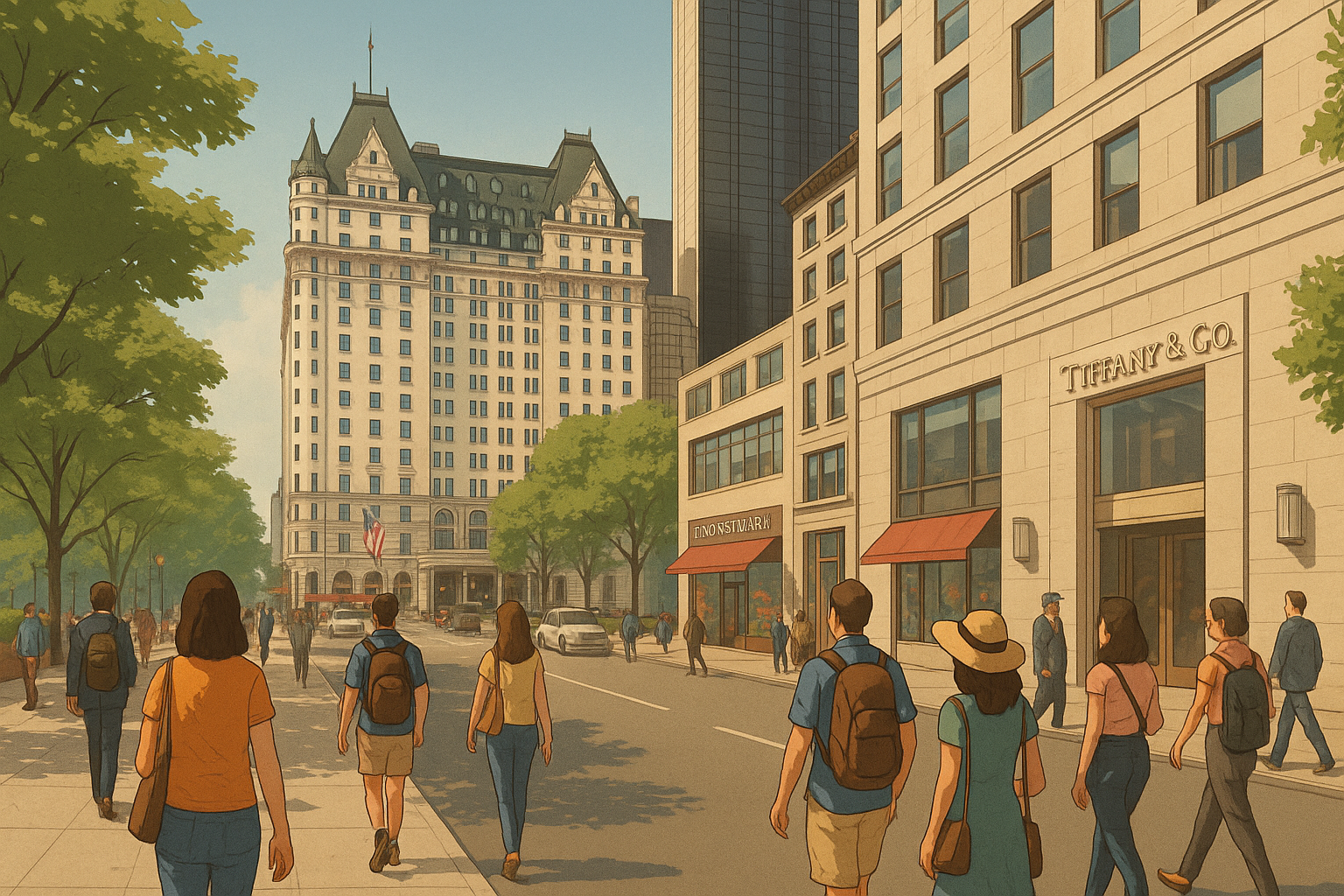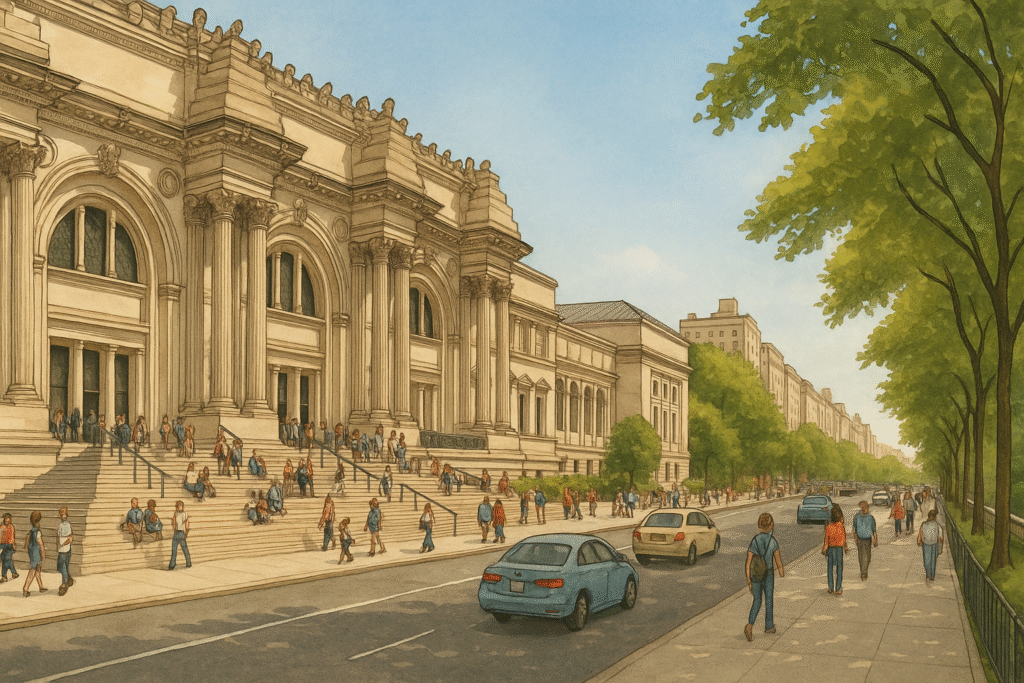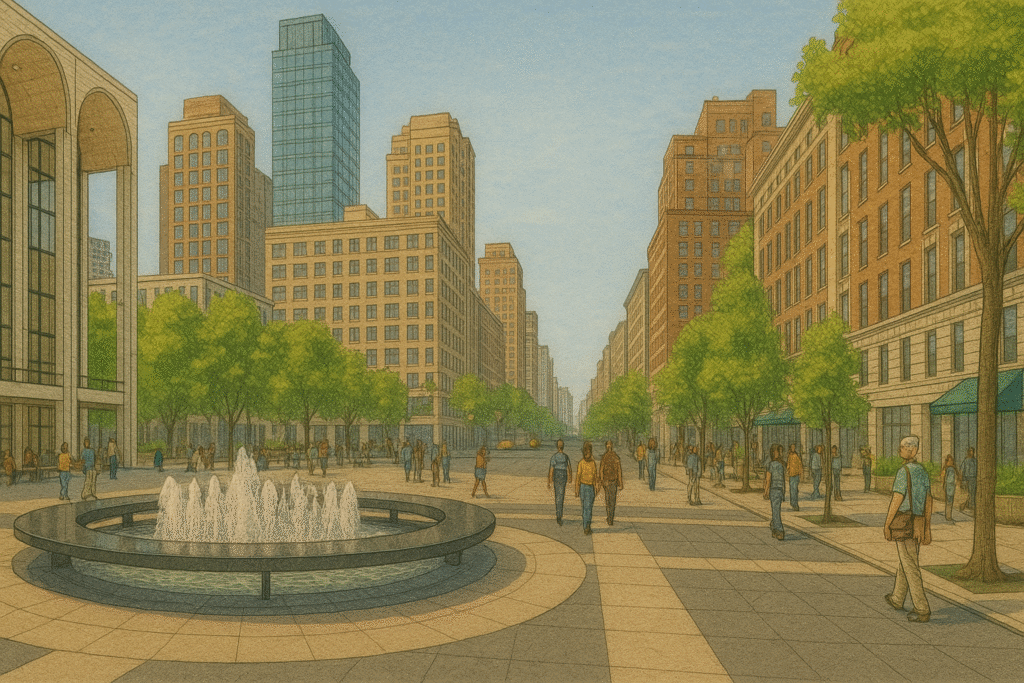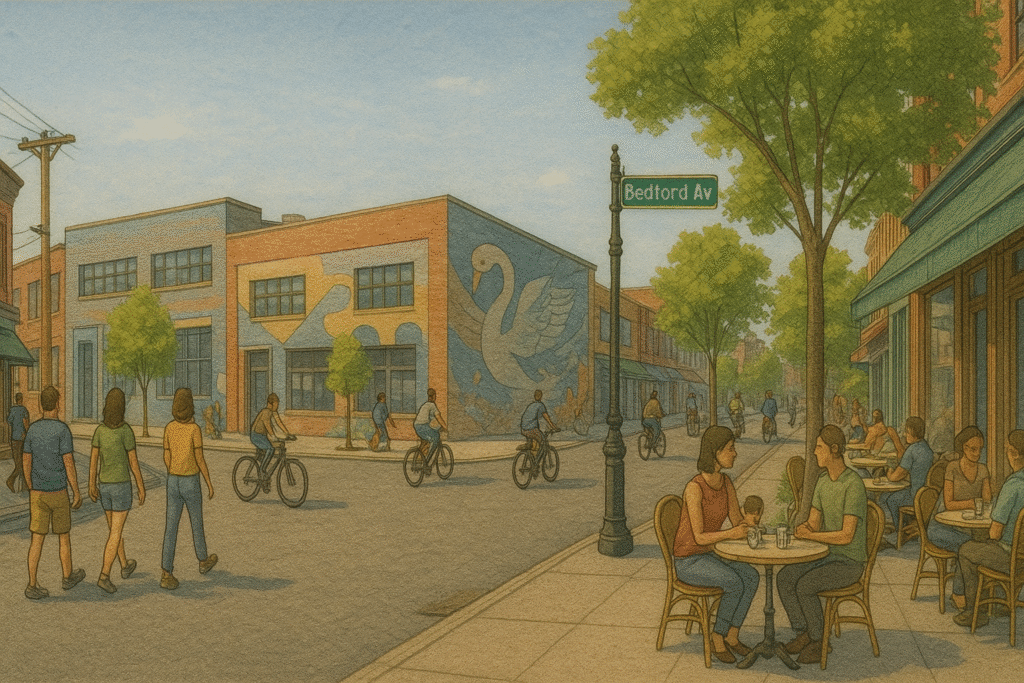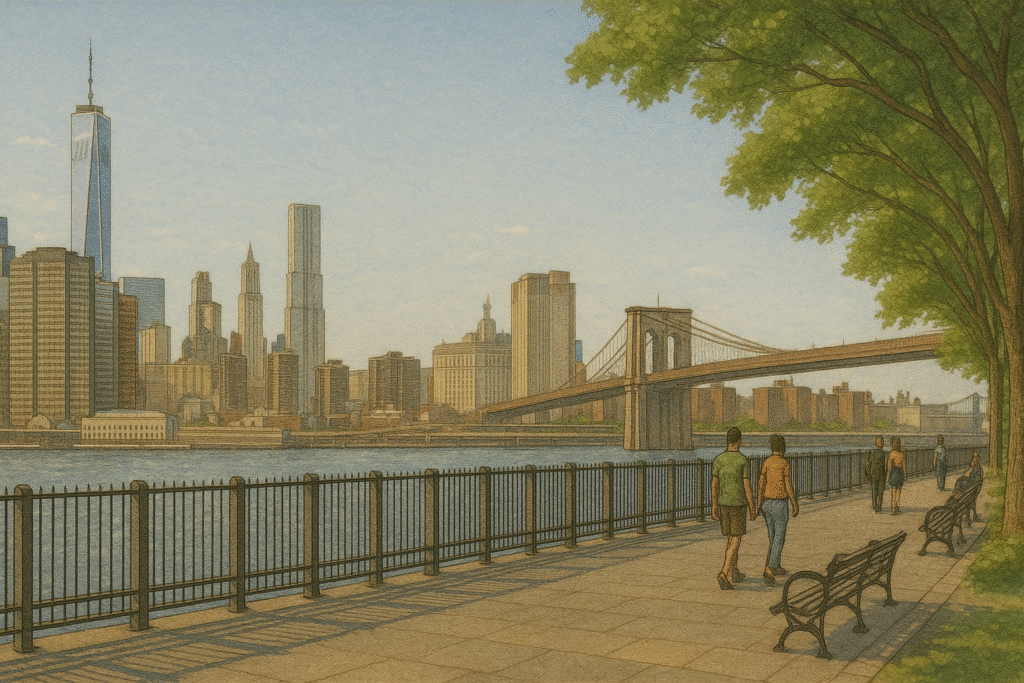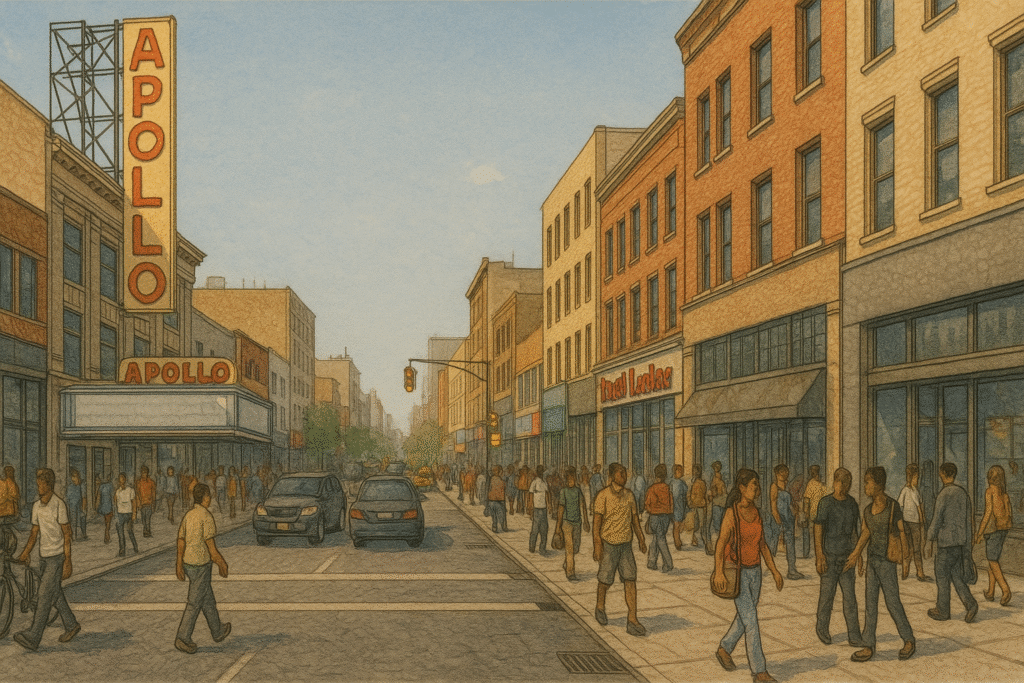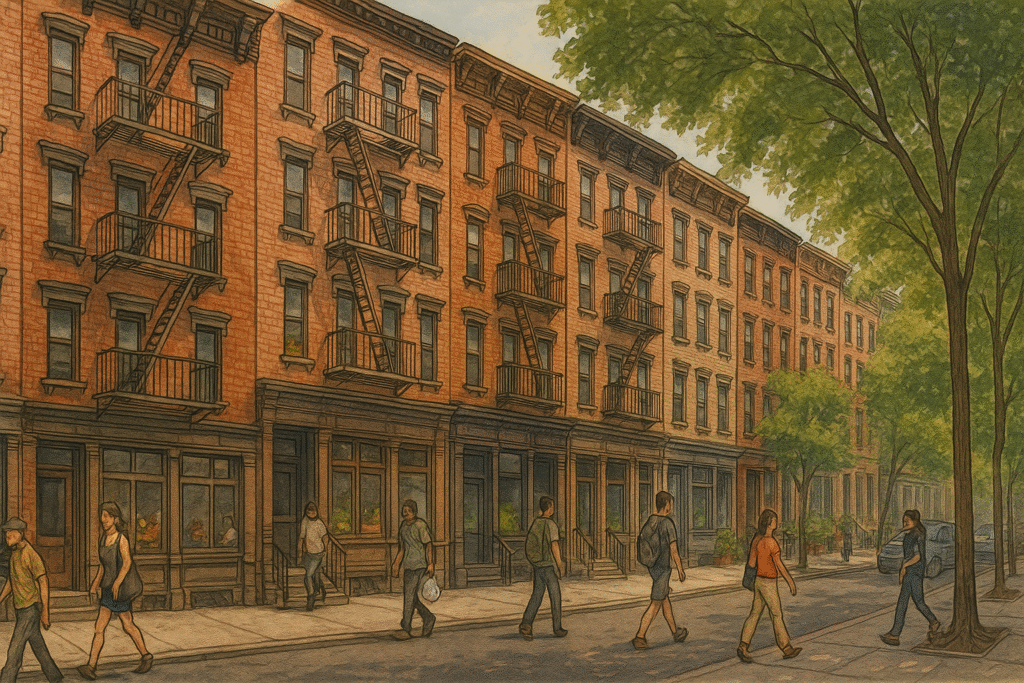A full day in Midtown Manhattan offers a compact but layered introduction to New York City. This itinerary begins near the southeastern edge of Central Park and moves southward through a tightly packed corridor of architecture, commerce, and culture. The route is walkable and efficient, anchored by major landmarks that are open to the public and visually distinctive. Along the way, there are options for brief pauses, extended visits, or simple observation from the sidewalk. The focus remains on exterior facades, interior spaces, and the rhythm of the city’s midsection at street level. Travelers should expect some crowds, consistent sidewalk energy, and a range of interiors that reward stepping inside.
Fifth Avenue & Central Park South
The day begins at Grand Army Plaza, where Fifth Avenue meets the southeast corner of Central Park. This starting point offers direct access to several recognizable storefronts. Across from the park’s edge stands FAO Schwarz, a multi-level toy store that has long served as a visual landmark, whether or not travelers choose to enter. Just south, Tiffany & Co. occupies its flagship location, with large display windows and a street-facing clock that mark its historic presence. Next door, Trump Tower features an open lobby and a cascading interior atrium that is visible from the entrance. While these stops can be experienced quickly, they provide orientation within the city’s commercial spine.
Across the plaza stands The Plaza Hotel, one of the most photographed buildings along Fifth Avenue. The hotel’s facade can be viewed from the sidewalk, and the interior lobby is accessible to visitors. Those with time may enter the Palm Court, a restaurant space under a stained-glass dome, or the Champagne Bar, which offers a direct view of the park. These locations can be visited without dining, but they are often crowded and may have seasonal access restrictions. From here, the walk continues south along Fifth Avenue, staying on the east side of the street for the clearest views of retail facades and street-level movement.
Rockefeller Center to MoMA
Heading south along Fifth Avenue, the next significant stop is St. Patrick’s Cathedral, located between 50th and 51st Streets. The cathedral’s twin spires and detailed Gothic Revival façade stand in contrast to the surrounding commercial buildings. Entry is free, and visitors may step inside to view the vaulted nave and stained-glass windows. The interior is active with regular services but remains open to quiet observation during most daytime hours.
Directly across the avenue is Rockefeller Center, a multiblock complex of offices, shops, and public spaces. The central plaza includes a sunken courtyard, seasonal ice rink, and outdoor café seating. Travelers may walk through the Channel Gardens, a landscaped path leading from Fifth Avenue toward the main building. Above the plaza is 30 Rockefeller Plaza, which houses the Top of the Rock Observation Deck, accessible by timed ticket. Visitors not interested in ascending the tower can still explore the lobby murals and Art Deco detailing visible from ground level.
A short walk west along 50th Street leads to Radio City Music Hall. The marquee and exterior are accessible from the sidewalk, while the Stage Door Tour offers a timed-entry look at the theater’s Art Deco interior, rehearsal spaces, and backstage areas. From here, continue west to The Museum of Modern Art (MoMA) on 53rd Street between Fifth and Sixth Avenues. The museum’s collection includes major works by Picasso, Van Gogh, Warhol, and others. General admission includes access to the sculpture garden, which can be visited briefly even without touring the full museum. MoMA also offers restrooms, a café, and seating areas, making it a useful pause point midway through the day.
42nd Street Landmarks
Leaving MoMA, the route continues southeast toward 42nd Street, where several major civic and architectural landmarks are concentrated within a few blocks. Begin with the New York Public Library’s main branch, located at Fifth Avenue and 42nd Street. The building’s exterior is marked by wide steps, Corinthian columns, and the stone lion statues flanking the entrance. The interior lobby is open to the public, and the Rose Main Reading Room—lined with long tables and chandeliers—is accessible on the upper floor. Entry is free, though security screening is required.
Just east of the library, the Chrysler Building rises over Lexington Avenue. While the building no longer allows general public access beyond the lobby, visitors can enter during weekday business hours to view the Art Deco interior, including decorative metalwork and marble walls. The viewing area is limited but still offers a look into one of the city’s most photographed skyscrapers.
From there, walk south to Grand Central Terminal, located at 42nd Street and Park Avenue. The terminal’s exterior includes the large clock and sculptural group above the main entrance. Inside, the main concourse features a vaulted ceiling painted with a celestial map, as well as the central information booth and brass clock. Travelers can move freely through the space, which remains open throughout the day. Nearby are several practical and atmospheric dining options, including the Grand Central food court, which provides a range of casual meals, public restrooms, and indoor seating. This stop marks the final destination of the itinerary.
This itinerary covers a dense stretch of Midtown Manhattan where architectural landmarks, cultural institutions, and commercial corridors are positioned within walkable distance. Each stop is accessible to first-time visitors without requiring extensive navigation or advance planning. The route includes opportunities to step inside public buildings, pause in shaded courtyards, and observe city movement from established vantage points. Travelers can adjust the pace as needed, skipping interior visits or adding short detours. By the end of the day, visitors will have seen a cross-section of New York’s vertical scale, public gathering places, and historic interiors—all within a single, continuous walk.

The Street Sign
The Street Sign points the way to where things are — the parks, restaurants, museums, and everything else. These guides are built to save you time and energy. Need a plan for an NYC outing? Follow The Street Sign.
